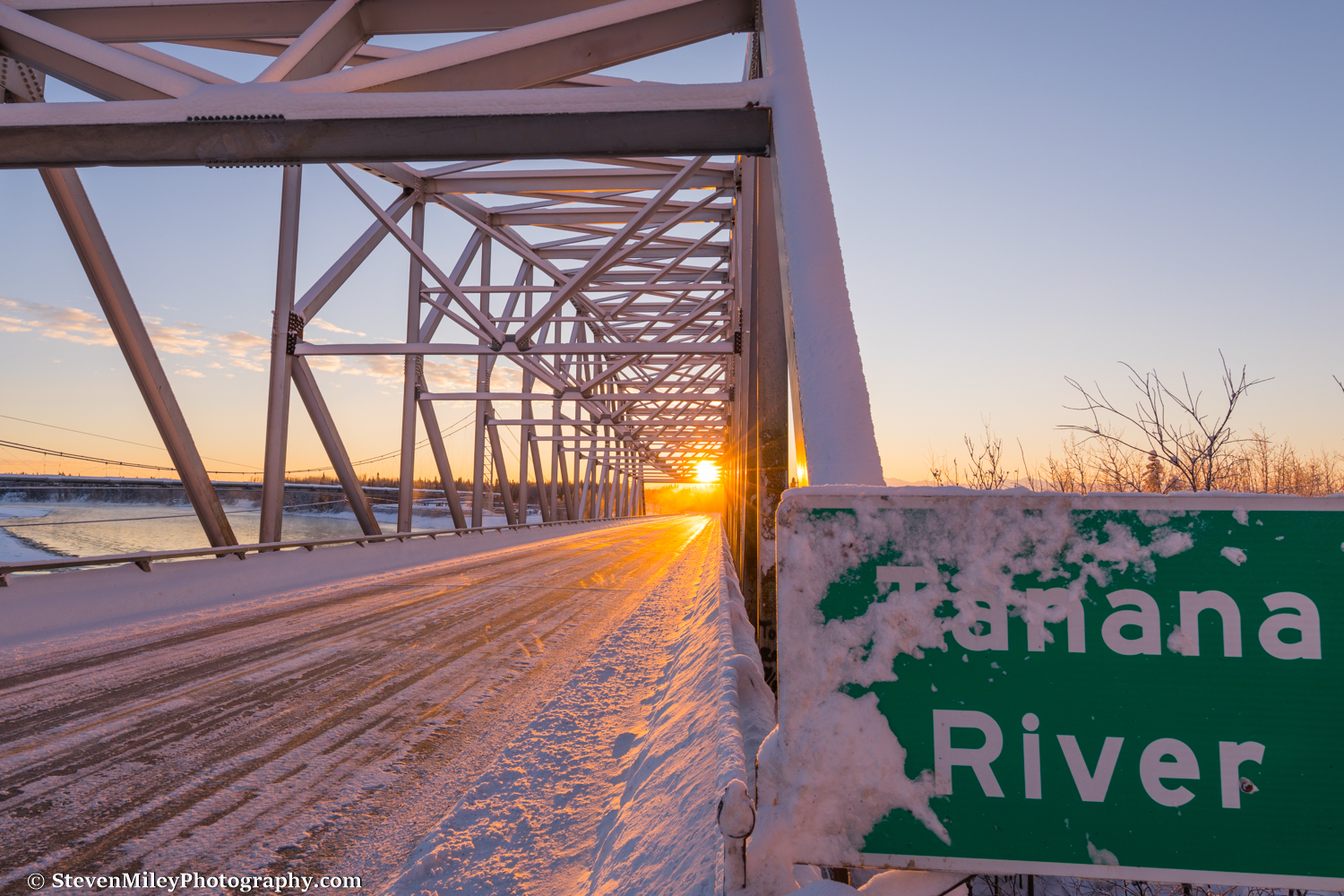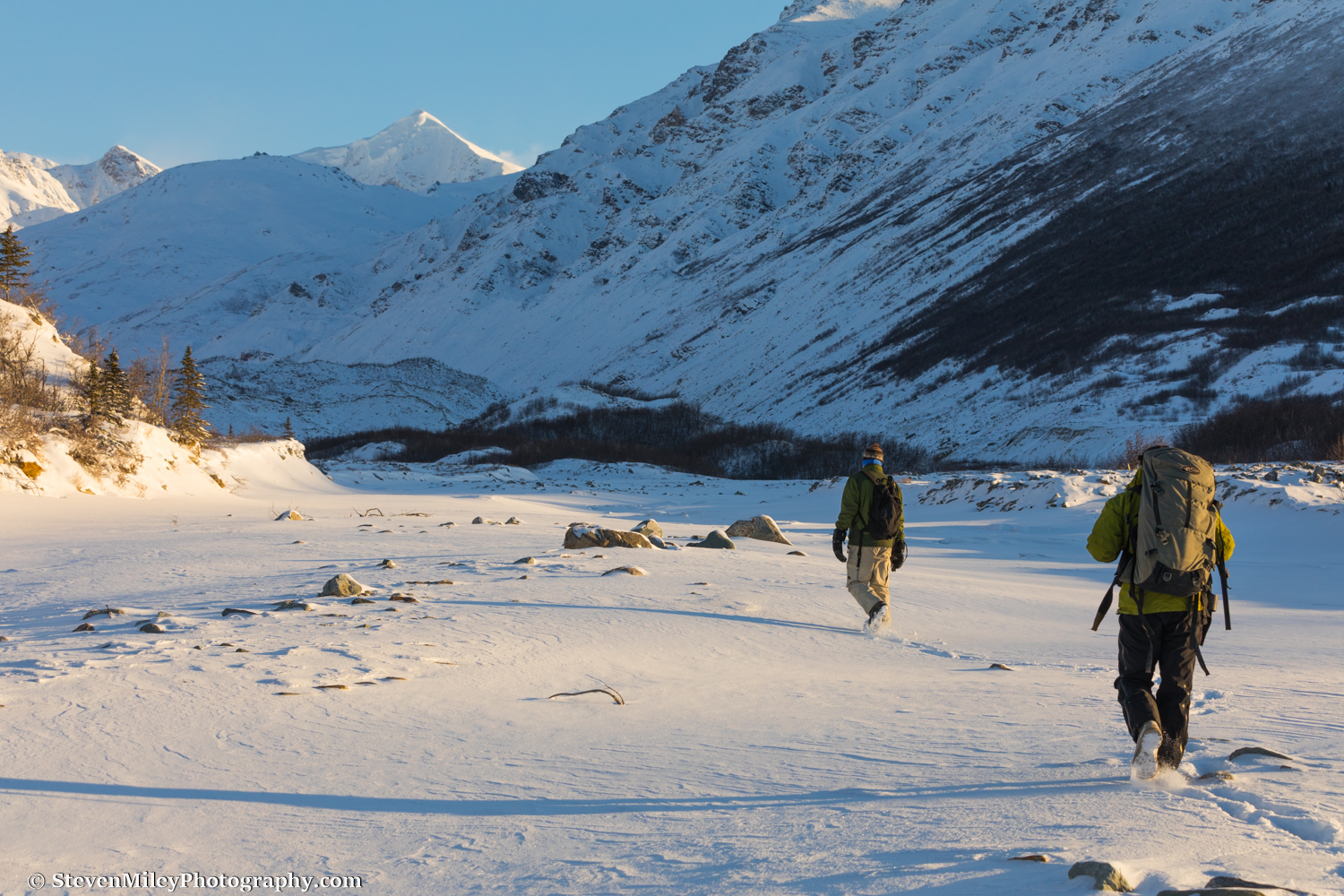Narrowing down my favorite ten Alaska images of 2017 wasn't easy. I avoided the temptation to select what I thought were my ten "best" or "most impressive" images and instead focused on the ones that I enjoy viewing the most. As the photographer, they're more than just images to me—they're memories. So here they are, in no particular order, along with the memories they evoke.
1. Root Glacier Ice Cave
I found an ice cave beneath Root Glacier in Wrangell-St. Elias National Park a couple years ago. It's carved out by a stream from nearby Donoho Falls, and the cave entrance directly faces the sun in the evening during mid-summer. I returned to the cave this July for a shot of the sun shining golden light inside. I found a pair of sunglasses in front of the cave, which was awesome because I had just lost mine while pack rafting Jarvis Creek a week prior. Afterwards, I camped next to a cool group of people who shared their salmon spaghetti with me. For tips on photographing ice caves, see my tutorial here.
2. Denali Winter Sunrise
Great summer shots of Denali are ubiquitous, but there are far fewer great winter shots of the mountain and even fewer that contain a real adventure aspect. I spent a cold night (-20 °F) camped out on a ridge in Denali National Park for this shot, where I also saw a great aurora show and had a close-up sheep encounter. Read more about my winter excursion to Denali National Park here.
3. Valley of Ten Thousand Smokes
I thought I stumbled onto a putting green when I found this solitary patch of green in the otherwise barren Valley of Ten Thousand Smokes in Katmai National Park. The terrain is incredibly rugged and very alien and I think this picture captures that best out of all the photos I took. Read more about my trip to Katmai here.
4. Gerstle River Bridge Aurora
This November was the first time in a very long time that I caught an impressive aurora display along the Alaska Highway. I wanted to nail a shot of the Gerstle River bridge or the Johnson River bridge for some time but the aurora just never cooperated until I got this shot. I could have taken an even better picture if I had been on the other end of the bridge when this happened. For tips on shooting the aurora, see my Aurora Photography Guide. I also offer Aurora Borealis Photography Tours.
5. Portage Lake Whiteout
I skied across Portage Lake to Portage Glacier during incredibly heavy snowfall in January. There were several other people visiting the glacier that day and they appeared like dots on an otherwise uniform background of white. I like this shot because the viewer is free to imagine the context surrounding the two people. Even though I know they were OK, it appears to me like they are lost wandering through a blizzard in the middle of nowhere.
6. Castner Glacier
I like this shot because the glacier looks jagged and uneven yet I'm casually walking around on it without the usual ice climbing gear or outerwear you see in similar shots. It also reminds me of having the entirety of Castner Glacier to myself in perfect summer weather. Read more about my summer trip to the Thayer Hut and the upper Castner Glacier here.
7. Pioneer Ridge
This shot of Denali's Pioneer Ridge at sunset takes me back to the high point of my trip to Peters Glacier. After a miserable night of constant rain and temperatures barely above freezing, I had a full day of warm sunshine, topped off with a great sunset while standing closer to Denali than almost anyone ever ventures on foot. I enjoy pictures of striking mountain ridges, and Pioneer Ridge is probably the most photogenic of Denali's many ridges. Read more about my trek to Peters Glacier and the base of Denali here.
8. Blue Heart Of Root Glacier
I was looking for interesting ice formations on Root Glacier when I came across this blue pool that looked like a heart from a certain perspective. It lined up perfectly with the mountains in the background and the lighting and cloud cover were just right. Hiking over glaciers in the summer is one of my favorite things to do in Alaska, mainly because of views like this.
9. Brooks Range Antler Sheds
This is the only time I've found a matching pair of shed caribou antlers. I took this some time after midnight in the Brooks Range at the top of a pass after a brief heavy rain, and it was almost like the antlers were the reward for reaching the top. I also think the shot captures the dynamic and wild nature of the Brooks Range. Read more about my hike in the Brooks Range under the midnight sun here.
10. Augustana Glacier Cave
My adventure buddy Forrest and I skied 7 miles to the base of Augustana Glacier in February. I originally planned to take aurora shots from a neighboring ridge, but the aurora was a dud that night and we spent our time exploring several cool ice caves instead. This cave had a very majestic opening and the blue color of the ice mixed well with the reflection of sunrise colors off the nearby mountaintops and sky. No doubt this cave looks entirely different now after the summer melting season. Read more about my Augustana Glacier adventure here.

















